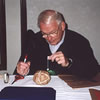Evolution of Neptune's atmosphere, page 5
The Size of the Planet matters
|
Mercury
(small) |
Venus
(medium sized) |
Jupiter
(very large) |
|
|
|
|
| Hydrogen (H) |
less than 1 hour |
days |
over the age of the Universe |
|
|
|
|
| Helium (He) |
roughly 1 day |
100 times the age of the solar system |
over the age of the Universe |
|
|
|
|
| Oxygen (O) |
800 million years |
over the age of the Universe |
over the age of the Universe |
|
|
|
|
This table shows the time it takes, on average, for a few common atmospheric gases to escape the gravity of a planet. The table shows that as the planets get larger (more massive), it is harder for the gases to escape. The table shows that the average time for any gas to escape from Jupiter's gravity is much too long. The same is true for all the Giant planets. Therefore it is likely that all the gases in Neptune's atmosphere are probably the original gases swept up by the proto-Neptune.
You might also be interested in:
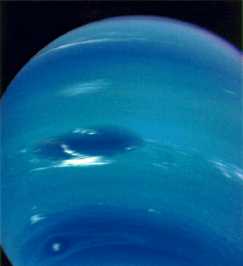
The giant planets have definitely changed since their formation. But how much remains to be seen. Most of the original air of the giant planets remains in place. (The earth-like planets lost most of their
...more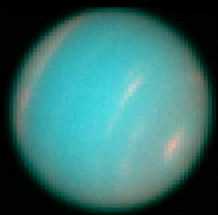
This image shows the new Great Dark Spot of Neptune, which was discovered using the Hubble Space Telescope. The image shown here, shows a "hole" in the clouds of Neptune in pink, in the northern hemisphere,
...more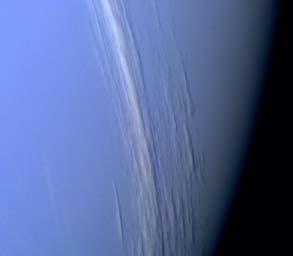
This image shows some clouds known as "cirrus" clouds, extending for many kilometers across the face of Neptune. These clouds are very high up, for they can be seen to cast shadows on the lower clouds,
...more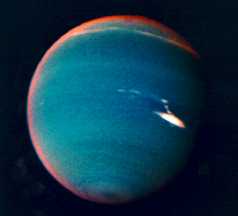
This image of Neptune uses false colors to show where the smog is. The smog of Neptune can be seen in red along the edge of the image. These hazes of smog are found at very high altitudes, over the clouds
...more
Like Jupiter and all the giant planets, Neptune's appearance shows a striped pattern of clouds. Other cloud shapes seen over time include a small dark spot, the "scooter" and the Great Dark Spot. The Great
...more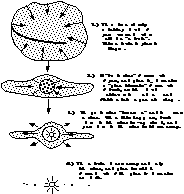
Scientists think that the solar system formed out of a spinning cloud of hydrogen and helium gas. Because the cloud was spinning, it flattened into a frisbee shape, just like a ball of pizza dough becomes
...more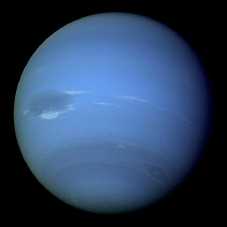
If you had a quiz question in school that asked what year Neptune was discovered, you'd probably choose 1846. But Neptune wasn't discovered the way all the other planets in our solar system were. Astronomers
...more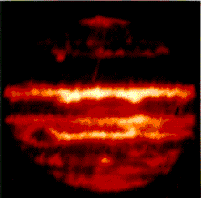
The picture shows places on Jupiter which are hot. Jupiter is a very warm body in space, as shown in the picture, and this warmth is associated with the energy of Jupiter. Neptune has also been found to
...more


